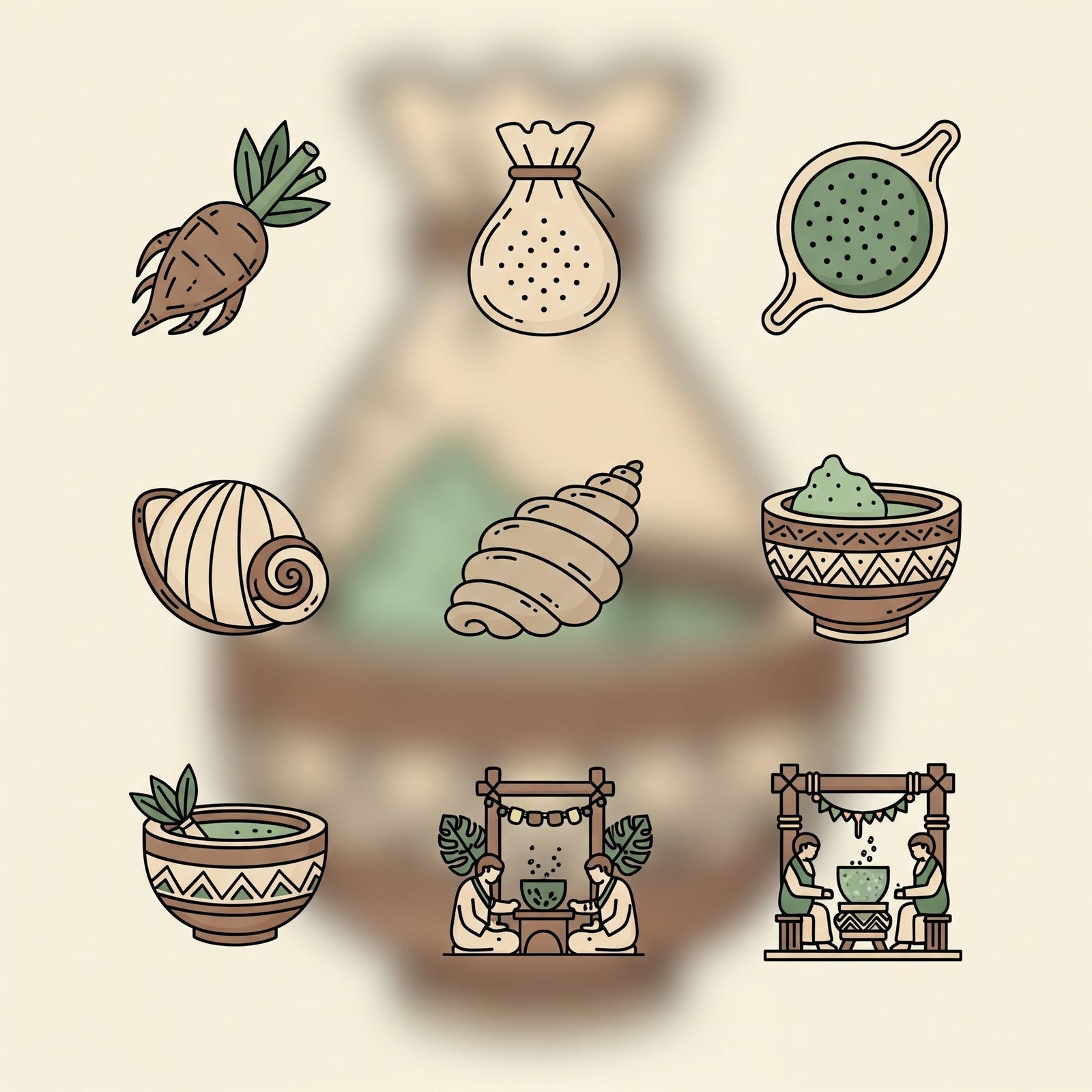For Faster Shipping use Amazon for delivery before Christmas
For Faster Shipping use Amazon for delivery before Christmas

Kava Glossary: 15 Common Kava Terms You Need to Know
August 12, 2025 3 min read
Diving into the world of kava can be a rewarding experience, but like any unique culture or tradition, it comes with its own vocabulary. To truly appreciate this ancient root and navigate your kava journey with confidence, it helps to understand the lingo. Here’s a glossary of 15 common kava terms you need to know.
1. Kava (Piper methysticum)
The botanical name for the plant itself. It's a member of the pepper family, native to the South Pacific islands, known for its roots that are used to produce a non-alcoholic beverage.
2. Kavalactones
These are the active chemical compounds found in the kava plant, primarily in its roots. Kavalactones are responsible for kava’s unique effects, including relaxation, calming, and mental clarity. The potency and type of effects often depend on the specific blend of kavalactones present.
3. Noble Kava
This refers to specific, traditionally cultivated strains of kava that are considered safe for consumption and produce desirable effects. Noble kava is preferred because it generally offers balanced calming effects without undesirable side effects. Brands like Wakacon pride themselves on providing only noble kava.
4. Tudei Kava
A term for non-noble kava varieties, often containing different kavalactone profiles that can lead to stronger, longer-lasting, and sometimes unpleasant effects, including lethargy or nausea the "two days" after consumption. These are generally not recommended for regular use.
5. Kava Root
The part of the kava plant used to make the drink. It's typically dried and ground into a powder for preparation.
6. Kava Powder
The most common form of kava available for consumption. It’s made by grinding the dried kava root into a fine consistency, ready for traditional preparation.
7. Lawena (Crown Root)
This refers to kava made from the Crown Root of the plant, which grows as a bulb under the ground, similar to a beet or turnip. Lawena typically contains less kavalactones and has a milder, smoother flavor than Waka, making it easier to drink. It's often favored for daytime use or as a mild sleep aid.
8. Waka (Lateral Root)
Waka is made from the Lateral Root, which are smaller roots extending out like a web from the Crown Root, also growing below ground. Waka tends to have a higher level of kavalactones, is darker in appearance, and has a more intense or bitter flavor. It is sought after for its stronger and more potent effects, often delivering deeper relaxation.
9. Kava Bowl (Tanoa)
A traditional, often intricately carved, wooden bowl used for mixing and serving kava in ceremonies.
10. Kava Shell (Bilo)
Typically a polished coconut shell used as a drinking cup for kava, particularly in traditional ceremonies.
11. Strainer Bag
A cloth bag (often made of muslin or fine mesh) used in the traditional preparation of kava to separate the fine kava powder from the liquid.
12. Kneading
The essential step in traditional kava preparation, where the kava powder is placed in a strainer bag and then "kneaded" and squeezed in water within a kava bowl to extract the kavalactones into the liquid.
13. Wash/Batch
Refers to a single preparation of kava. You might do multiple "washes" or "batches" from the same kava powder.
14. Chuva (or Chew)
A term sometimes used to refer to a single serving or shell of kava.
15. Reverse Tolerance
A phenomenon some new kava drinkers experience, where the effects of kava are not strongly felt during the first few sessions, but become more noticeable and potent with subsequent, consistent use. It's as if the body needs to "learn" how to respond to the kavalactones.
Understanding these kava terms will not only enrich your appreciation for this ancient plant but also help you make informed choices about the type and preparation of kava that’s right for you. Enjoy your journey into the world of kava!
Leave a comment
Disclaimer:
The views and opinions expressed in this blog post are those of the author and do not necessarily reflect the official policy or position of Wakacon Kava. Any content provided is for informational purposes only and is not intended as a substitute for professional advice. Wakacon Kava is not responsible for any errors or omissions, or for the results obtained from the use of this information. Readers are encouraged to do their own research and consult with qualified professionals before making any decisions based on the information provided in this blog.
Affiliate Disclosure:
This blog post may contain affiliate links, which means that Wakacon Kava may earn a commission if you click on a link and make a purchase. This comes at no additional cost to you.
Copyright Notice:
All content on this blog is the property of Wakacon Kava and is protected by copyright laws. You may not reproduce, distribute, or transmit any content from this blog without the express written consent of Wakacon Kava.
